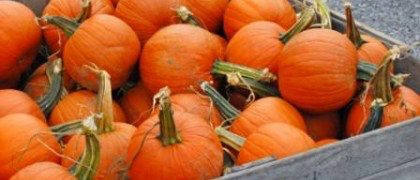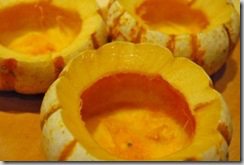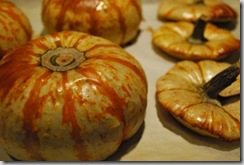As the days shorten and grow cooler, the autumn months are one of my favorite. Perhaps it’s the respite from the heat of summer, the new season of vegetables and cooler weather that inspire “comfort cooking”, or a combination of both. For some people I think it’s the “routine” that we often fall into this time of year. That annual routine of holidays and celebrations starting with various weekend harvest festivals and then stretching to Halloween, Thanksgiving and the climax of Christmas and New Years.
I love the distinct sweet, hearty and flavorful creations that come from cooking this time of year. Winter squash is piled high in the markets and pomegranates and figs are brightening the shelves and just waiting to add a sparkle of color and touch of flavor to our meals.
Pumpkins are a versatile fruit that often get relegated to the role of decorative element or pie ingredient. We often forget that the native Americans depended upon them along with other squashes as a primary food source, more typically eaten in savory preparations rather than desserts. The fact is, most things that can be done with butternut and acorn squash can also be done with pumpkins. Of course they make delicious soups but how often have you served pumpkin as a side dish or part of a salad?
When selecting pumpkins for cooking, focus on the smaller “pie pumpkins” or the miniature varieties often known as “Jack-be-Little”. Pie pumpkins also known as “sugar pumpkins” are best for cooking as they tend to have a denser flesh with less water to dilute flavor and a greater percentage of sugar for flavor. The miniature pumpkins, which most people don’t even realize are edible, are great for single serving salads, soups, desserts, and even casserole-style dishes. When selecting pumpkins, look for those that are weighty for their size and are firm without any soft spots. Store pumpkins and winter squash in a cool dry place until ready to use.
If you’re using them for soups or need the puree, the easiest method of cooking them is to treat them like any other winter squash and split them in half lengthwise, scoop out the seeds and then place cut-side down on a parchment or foil-lined (to minimize clean-up) baking sheet. Roast in a 375-400F degree oven until soft to touch on the exterior.
Placing them cut-side down allows the interior moisture to help steam and soften them. When softened, cool and scrape the flesh from the interior of the skin.
Miniature pumpkins are both attractive and edible! Scoop the interior seeds, season the interior and roast upside down until tender. Fill them with pumpkin pie mix, corn pudding or even your favorite meatloaf mixture and bake until cooked through. Salad greens and seasonal fruits such as figs, dates, and pears can be arranged inside the roasted pumpkins for a decorative salad that can be assembled in advance.




